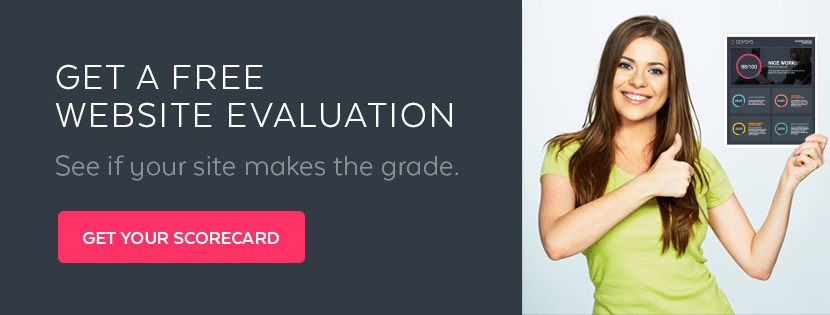Lately, we have noticed some pretty awful articles circulating on how to increase online booking conversion rates. Unfortunately, most of these articles include either superficial tips like “Use a call-to-action button” or provide generalized advice like “Conversion rate optimization is all about A/B testing.”
So we thought the time is right to set the record straight. Hotels, inns, and bed and breakfasts should take notice. Optimizing the traffic you already have is a great way to generate more bookings and be less reliant on expensive Online Travel Agencies (OTAs).
What the Heck is Conversion Rate Optimization?
When it comes to generating more direct bookings, you can do one of three things: You can drive more traffic to your site, you can improve your ability to convince guests to book a room, or both. Conversion rate optimization (CRO) is the act of studying and improving your existing traffic, visitors, booking process, and conversion rates. Consider this:
Let’s say you have boutique hotel with 25 rooms. Your average daily rate is $200 per night, average length of stay is 3 nights, and your occupancy rate is 80%. So to calculate your monthly revenue:
(25 X .8) X $200 X 30= $120,000*
You are generating somewhere around $120k per month. You know that by increasing your occupancy rate (via direct bookings) you can generate incremental additional revenue without having to use expensive OTAs. If you were able to increase your occupancy rate from 80% to 90% that would be an additional $18k per month, or $126k annually!
In this post, we are going to focus on improving your ability to entice website visitors to book a room on your website.
5 Real-World Tips to Increase Your Hotel’s Conversion Rate
The thought of generating an additional $120k in revenue probably has you pretty excited about CRO. And like many of our customers you are likely ready to jump right in. Here are five tips to consider as you start to optimize your hotel’s conversion rates:
1. Begin by Gathering Data and Benchmarking
Management guru Peter Ducker is often quoted as saying, “If you can’t measure it, you can’t manage it.” Mr. Ducker is right, especially when it come to CRO. Start by gathering both quantitative and qualitative data.
A great place to start is with your analytics platform. Try to gather data indicating how your visitors are using your site. How much traffic do you have? What pages are they viewing? And what percentage of your visitors are clicking through to your booking engine?
In addition, gather qualitative data through tools like customer surveys. Try to wrap your head around items that are important to, and influence, your guests. Questions that have been useful for us include: How would you describe our hotel to a friend? How could we do a better job when you booked a room? What kept you from booking a room on our website?
There are several other ways to collect relevant data, such as usability tests and on-site surveys. However, focus on gathering as much data as possible from easy, accessible sources. Then organize the data so you can use it for performance benchmarking.
2. Run Some Tests (But Keep it Simple)
Now that you have started collecting and reviewing data it’s time to set up and run your first test. For this example, we are going to focus on A/B testing. A/B tests can be as simple as sending 50% of your traffic to one page and 50% to another, or as complex as testing different button colors on your booking engine. Regardless, our advice is to keep it simple: Go slow and test one thing at a time.
There are several ways to conduct A/B tests. You can manually create landing pages or use sophisticated software such as Google Content Experiments or Optimizely. The key point is to use a solution that you are comfortable with, is easy to set up, and allows you to measure results.
In addition, make sure you run your tests for a statistically significant period of time. For some properties this may be as short as seven days, for others, maybe thirty. Make sure you feel comfortable that you have enough data to review.
Here are a few of our favorite beginner tests:
- Property Photos - Try different property and room photos. Do potential customers respond better to one than another?
- Calls to Action - Try different messaging and descriptions. Consider seasonality, local events, and time-based promotions.
- Colors - Play with button and call-to-action colors.
3. Data is King
As you begin to collect and measure relevant data you will begin to draw some conclusions. At this point, you will most likely be surprised by the results. Ensure that you are relying on data, not your opinions or the opinions of others. We often hear hoteliers decide to make significant changes to their websites based on gut feelings, opinions, or personal experience. Unfortunately, many hoteliers are not fully aligned with the needs of their current and potential customers. Use data! It doesn’t always tell the full story, but it never lies.
4. Content is Crucial
As you become more comfortable with your testing lifecycle start experimenting with different images, content, and platforms. Consider testing the following:
Mobile vs. Desktop - Do your mobile visitors respond differently than desktop? Mobile hotel booking are on the rise. Make sure you offer a great booking experience on smartphones and tablets.
- Creative - Do your customers respond better to property photography or room photos? Try pictures of your local area, group events facilities, spa, or your restaurant.
- Messaging - Do your potential customers prefer to read our scan content? Try short paragraphs vs. bullet points.
- Phone vs. Online Bookings - Do you customers prefer to call or book through your site?
5. Interpreting Your Test Data
Consider following these rules as you begin to interpret your test results: First, run your tests until there is a 95% or greater chance that your test version will perform better than the original version. Second, run your tests for a statistically significant period of time. If you have followed both of these rules you can declare a winner. Which version converted better? Which option resulted in more bookings?
Now What?
Given how competitive the hospitality industry is, especially with the massive budgets and digital marketing acumen of OTAs, conversion rate optimization can be a great tool to generate incremental revenue gains. So go ahead and give it a shot. Your hotel has everything to gain and nothing to lose.
*25 = # of rooms
.8 = % occupancy
$200 = ADR
30 = days in a month
Want a personalized roadmap for improving your conversion rate? Get our free website scorecard.

